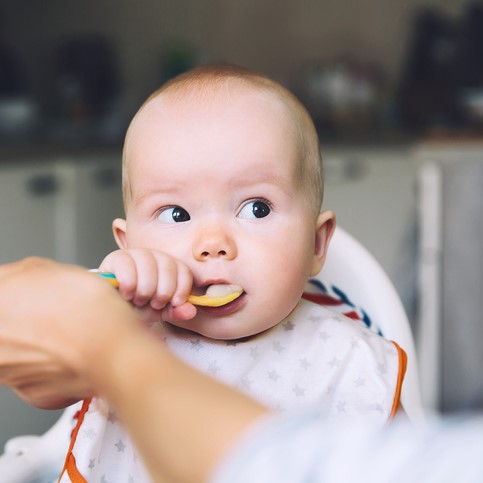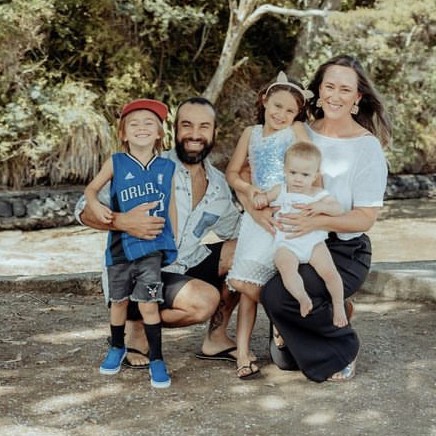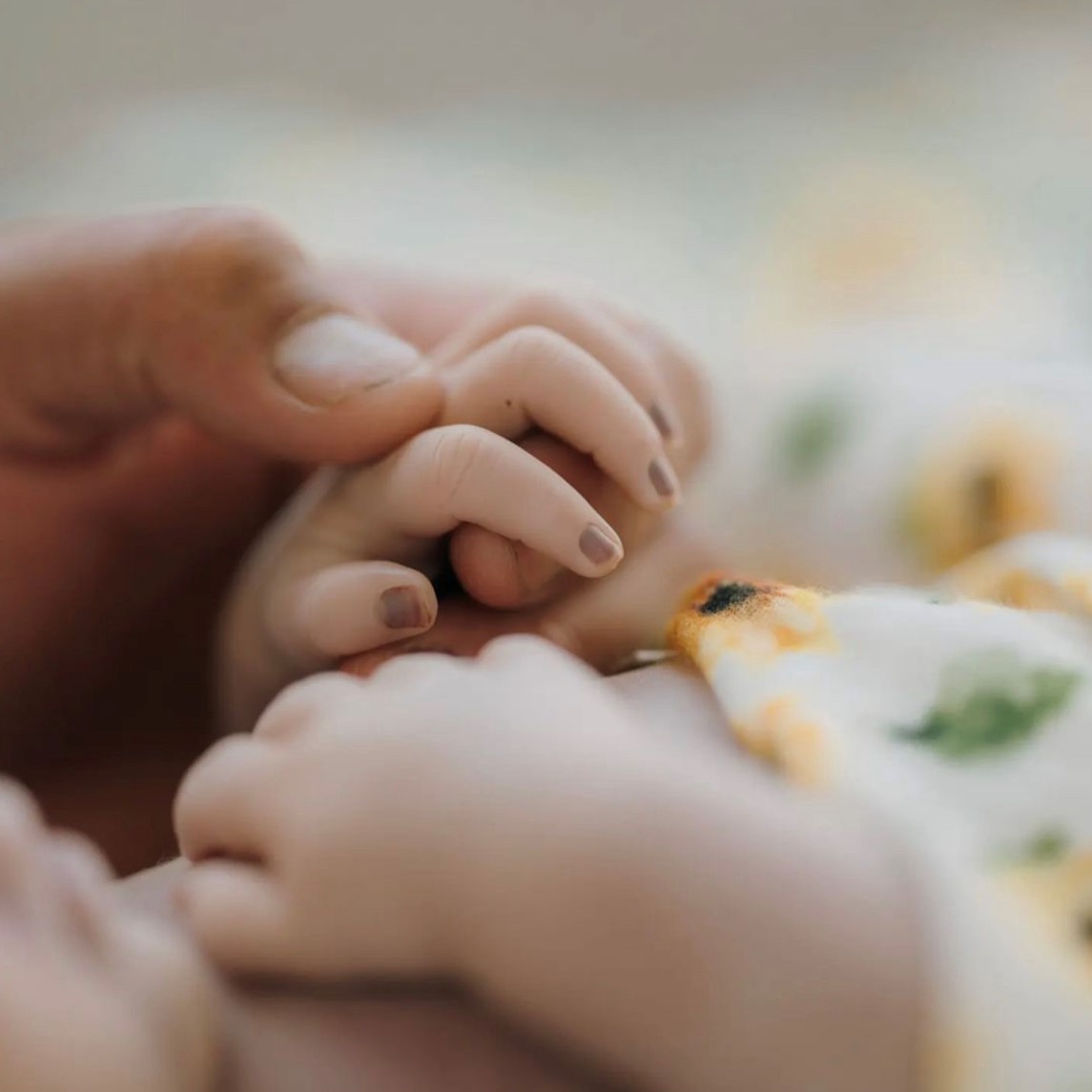Māmā Muse: Pania Little

Pania Little is a beautiful, dedicated māmā of two, currently raising her pēpi in Japan alongside her husband, rugby player Michael Little. In light of Caesarean Awareness Month, we spoke to Pania about her birth stories and her experience of maternity care overseas. Her answers are honest, emotive and powerful as she speaks her truth about reflecting on birth, bravely processing trauma, and what this month of recognition means to her.
Kia ora Pania. Ko wai koe nō hea koe?
Kia Ora, Ko Pania tōku ingoa, nō Ngāti Pikiao me Ngāti Paoa ahau.
Can you introduce yourself? Tell us about yourself, who’s in your whānau and where you live?
Kia Ora Tatou, Konnichiwa! My name is Pania Little, I currently live in Tokyo, Japan with my husband Michael and two tamariki – Pīata, who is about to turn two, and Hawaiki, 4 months. I am a housemaker who is navigating life in a foreign country and trying my best to assimilate into being a mother of two pēpi.
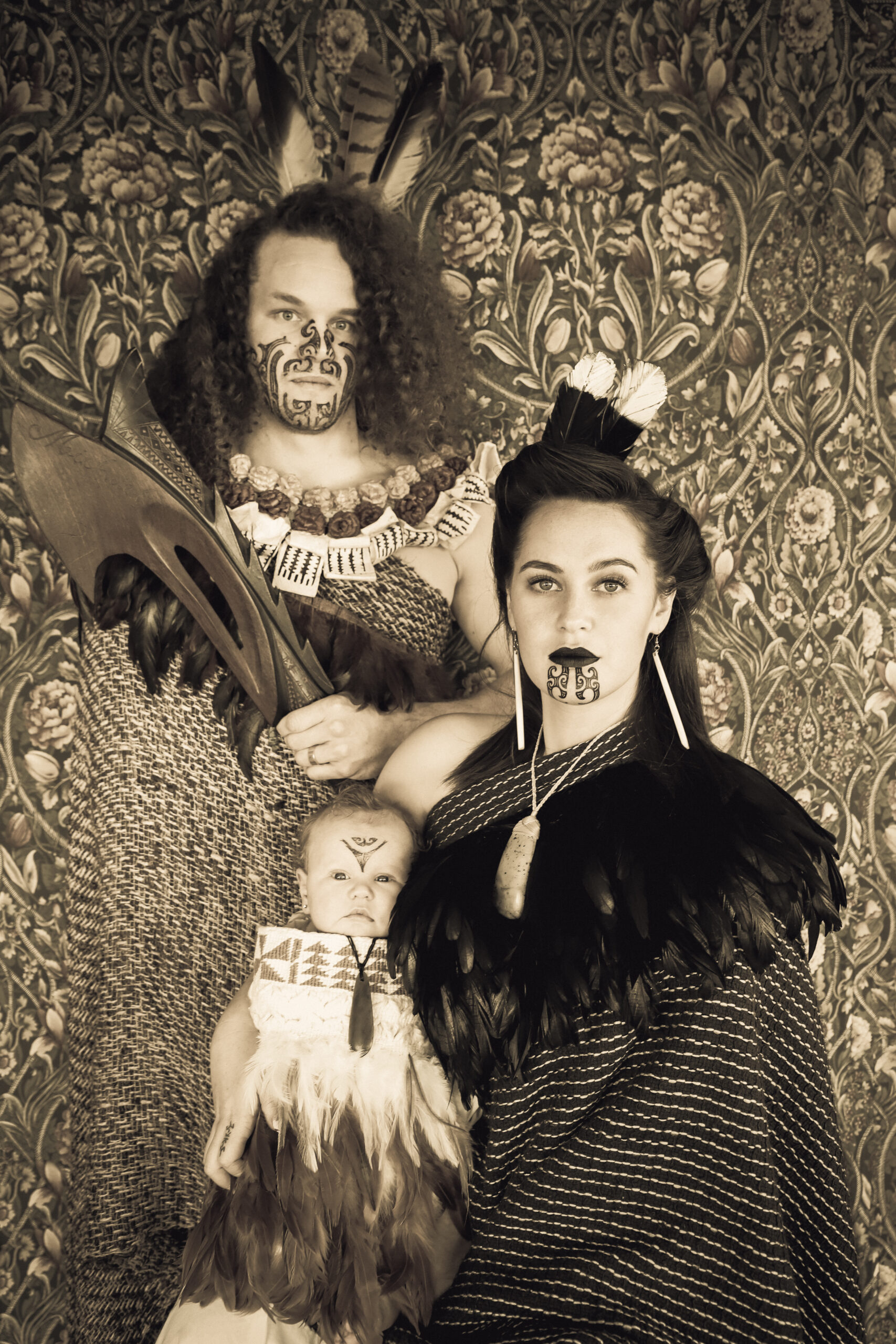
Can you give us an overview of your birth with your daughter, Pīata?
COVID struck when I was about 30 weeks with Pīata and this had an impact on Michael’s work as a rugby player as they cancelled the competition siting COVID safety requirements. We hastily booked flights back to NZ and, not too long after that, a lockdown was imposed. I spent most of the third trimester of my hapūtanga at home. I had always wanted a home birth and this was about to become an option with my midwife as DHBs were encouraging them as a way to limit exposure in hospitals. At this time, protocols for COVID were being modified almost daily. I had a pool set up at home and everything ready to go; I was so excited. This was until my results came back for my iron where I was told that for safety’s sake, I’d have to birth in hospital. I was able to labour up until a certain point, however, I’d have to give birth to her in hospital.
Pīata was three days overdue and I had a stretch and sweep to get things going. The next morning, my waters broke and unfortunately they were green which meant there was meconium in the amniotic fluid. My hopes of labouring at home were gone – I needed to be admitted to the hospital to be induced because there is a risk of infection to the baby. Pī was happy in her little home and didn’t want to move. After labouring all day and no progress I was tired and hōhā and they decided to give me an epidural to see if that would relax me and also help with dilation. When the morning came, there was still no progress so I was consulted and told I needed a c-section. 30 hours had passed by this point and the risk of infection was growing. I felt like I was between a rock and a hard place. How did I get here? On the continuum for birth, I had planned to be right at the other end of the spectrum, having a home birth with as little intervention as possible and there I was, having maximum intervention with a surgery that I really wasn’t prepared for.
I think my adrenaline helped to keep me excited because after all this time I was going to meet my pēpi and so I wasn’t prepared for what was to come next. The part that really overwhelmed me was the actual theatre and being wheeled in. I remember it was a white, bright room with lights everywhere, and what felt like 20 or so people in the room. It felt as though I was being talked at and touched by all the 20 people in that room as well. Up to that point, I felt brave, but when the anaesthetist was testing to see if I could feel anything, the nurse was asking to confirm my name, and the surgeon was telling me what was happening, it was like sensory overload and I cried. I tried hard to remain calm because I felt as though I could have spiralled out of control and I didn’t want Pīata entering the world with me completely hysterical.
The surgery itself felt like an out of body experience. Is this my body? Will they be able to get Pia out? Will she be breathing? Once she was born, I heard her cry and she was brought to me immediately. It is so hard to describe that moment because it felt chaotic and magical and like time had stood still but then the room was spinning.
Once the surgery was complete, I was taken to the recovery ward where I was able to bond with Pīata and bask in the bubble of having my pēpi earthside. Some of the drugs I was on made me shake but once Pī was placed on my chest it stopped. It felt so wonderful because it showed we had this symbiotic relationship where we both needed each other for survival. This was short-lived, however, as we were told that I’d be wheeled to my room and Michael could have ten minutes with us and then had to leave.
Because of my long labour with Pī, she had developed an infection that affected her lungs. She was born at 2:57 pm that afternoon and by midnight had been taken into SCBU (Special Care Baby Unit) at Waitakere Hospital. I must say, it was a real whirlwind experience. One that as I am writing it, brings me happiness but also trauma that needs real unpacking.
Last year you had your son, Hawaiki in Japan. Compared to Aotearoa, what was it like being hapū and giving birth in Japan? What preferences did you advocate for in your birth the second time around and how were your wishes met by your maternity care team?
Lol, how long do we have? In all seriousness, it was a real trip giving birth here. The Japanese by nature are overly cautious people and this transfers through every system they have. They are thorough, precise, over-the-top, and follow every rule to the letter, even if it isn’t necessary. So, because Pīata was a c-section birth it would be automatically determined that my next birth would be a c-section, if I was to birth in a general maternity clinic. This didn’t sit well with me as I was still reeling from the trauma of Pī’s birth and so I wanted to at least give myself an opportunity to birth vaginally.
I got in touch with a wonderful doula here who is English and she was able to give me some options in terms of which clinics allow for a VBAC. There were only two available and each had its pros and cons. I ended up going with a clinic that many international māmā use, called Aiiku in Minato, Tokyo. It was very expensive and we considered whether going back to NZ to give birth would be better. However, NZ was still enforcing MIQ so I would have had to travel heavily hapū with Pī alone; Hawaiki was due at the beginning of my husband’s season so there was no guarantee he would be able to get to the birth. There were stand-down periods on both sides of the border for Japan and NZ which would have totalled a month away for Michael so it just wasn’t practical and also just as expensive, if not more so.
In the beginning, it seemed as though most of my preferences were going to be met if I were to birth vaginally which was encouraging and positive. I wanted to be able to keep my whenua once Hawaiki was born and my OBGYN had no problems with that. I also wanted a muka tie as I had for Pī but Japanese hygiene and practice rules meant they wouldn’t allow it.
Being hapū in Japan was similar to my hapūtanga with Pī in the sense of practice and systems. I would be scanned regularly and this was the only part I enjoyed about the appointments because I got to see Hawaiki. However, I was on the fence because I feel the constant intervention of machines, measuring and testing etc. can be excessive and doesn’t give a lot of autonomy or trust to the māmā. Also, it can feel as though māmā need to be reliant on these machines to give birth when in fact they have the complete power to do it themselves.
There got to a point in my pregnancy, around 37 weeks, where Hawaiki was measuring above normal weight. My OBGYN, who was pretty cautious, gave me the spiel about bigger babies being harder to birth, there could be complications etc. and was saying if his weight went above a certain level then we would need to prepare for a scheduled c-section. On top of this, they started weighing me weekly and I was told to keep my weight down as much as I could because this could also contribute to birth complications. I was so pleased I had the support of my doula because she debunked many of those comments and said that I needed to continue to believe I had the power to birth my baby safely, just as is. A week before my due date, the OBGYN brought forward the scheduled c-section date because Hawaiki was above the weight they felt was safe for a VBAC. I was so emotional that week, I felt like I had let myself down. I felt lost and defeated and like my needs weren’t being met. I was so determined to have a vaginal birth mainly because the hospital I was birthing in wouldn’t allow my husband to be there if I had a scheduled c-section as well as no visitation post-birth. Because of Pīata’s birth, I was traumatized – and that was with Michael’s presence, in a country where I could understand what they were saying to me. I was so anxious about being alone in this birth and not understanding what was going on that I did everything I could to advocate for myself to push the scheduled c-section date out further and get myself into labour naturally.
View this post on Instagram
Can you tell us how your birth with Hawaiki unfolded? How do you reflect on your experience now, three months on?
Hawaiki was over a week overdue and the week he was due I did all the ‘tricks’ and old wives’ tales (castor oil, however, was not touched) to bring my labour on. I did nipple stimulation, exercise, the miles circuit, had sex, took primrose oil, ate pineapple, did curb walking, spinning babies tutorials, and had spicy food – ALL OF IT. One night I started having contractions and they lasted the night. I had never felt so elated to feel pain because I felt like something was finally happening. That day though, Michael needed to go to work and they just disappeared. I was so low because I could feel the pressure of my scheduled c-section date looming and I just felt tired, weak, and defeated. The next day was my last appointment before my scheduled c-section date and I spoke to my doula about what I should do. She gave me the courage to ask my OBGYN to push my c-section date a few more days just to give my body more opportunity to go into labour naturally. At the appointment, I plucked up the courage to ask for a later date. With a little push back and disbelief, I was given an extra week! I was elated and felt like a huge weight had lifted off my shoulders.
By Friday, I had a bloody show in the morning and I was SO HAPPY! My mucus plug was coming away and I was feeling energised after having a difficult week. Saturday morning came and Michael had a preseason game and with nothing progressing he went to work. By 9:30 I messaged to say I had another more significant bloody show and then by 11:15 my contractions started. Michael was scheduled to play for 40 minutes so he did that and as soon as he finished he got in a taxi and came back home. It was about a 90-minute trip. I felt relieved to have him home so I could lean on him for support. I had a bath and focused on my breathing. I felt so empowered that my body had done this all on its own. It was wonderful to feel it because I was induced with Pīata and as I hadn’t experienced it with her, I doubted my ability to do it naturally. I was really excited and felt like it was going to be a fairy-tale dream for me. It was like the VBAC experience was mine to have and it was coming true.
Tokyo is a huge prefecture and our clinic was almost an hour’s drive away, not even during busy periods so I was feeling anxious about progressing quickly and being caught driving to the clinic. At 11:30 pm we called the OBGYN to tell him I was in labour and my contractions were not too far apart, but also that I felt I could labour for one more hour at home. When I called, he had seemingly woken up from a slumber and didn’t sound too excited about being called late. The drive to the clinic was hard and contracting in a car is not fun. Michael and I had found our groove with labouring and with each contraction I would either rest on him, holding his shoulders while he squeezed and relieved my hips, or he would be behind me while I’d rest my weight on a chair and he would squeeze my hips there also. I’d let him know when I felt like one was coming on and he would get into position.
When we arrived at the hospital we did all the checks and were admitted. The OBGYN arrived not too long after that and did an examination. I was FIVE centimetres dilated and SO proud of myself. With Pīata that was the extent to which I got and I didn’t dilate further so it was so encouraging to know that this was happening. My doula had warned me that with this particular OBGYN, his practice was to break patients’ waters to speed up labour, but this can also be a deterrent to continuing with a VBAC if the waters are green when they’re broken. She said that if he says that’s what he’s going to do then I need to stand my ground and ask to be given some more time to allow myself to dilate more and be ready for vaginal delivery. At the time, I was so uncomfortable – I was having contractions in my back which made it much harder to manage the pain and I felt vulnerable also because I was in so much pain. The OBGYN said he was going to break my water. At that moment, I felt powerless, like I had no voice. I was in a state of wanting it to end but also wanting to go through it all. I remember looking at my husband and then I can’t remember what happened after that, but he broke them and at first, he said the waters were clear. This made Michael and I tremendously happy because it meant we could continue to progress with the VBAC. Then, upon greater inspection, they were green and the OBGYN told us that we were changing tack and would need to have an emergency c-section. In that moment, I just wanted the earth to swallow me up. I had got so far! I tried to push my case and ask if I could continue labouring and was made to feel like I was putting my baby in danger if I tried to have a VBAC given there was a risk of infection etc. So many things weighed on my mind at that moment. Because of Pīata’s birth outcome and her needing to spend time in SCBU, I knew I didn’t want to have this pēpi experience something similar. It felt as though the OBGYN was using emotive words like ‘distress’ and ‘risk’ in a way to curb my decision towards being supportive of the c-section. Looking back now, I definitely had more power but just didn’t have the courage or strength when it seemed as though I wasn’t going to be supported by my OBGYN. When the OBGYN left the room, I asked the midwife whether my husband was allowed in the theatre because the rules were different for scheduled and emergency c-section births and she said no. I cried my heart out and demanded that he be let in. I think because the OBGYN knew how distraught I was about the outcome he pulled some strings to let Michael in. Honestly, it was a farce and it upsets me looking back.
I must say, once I was in theatre I felt calm and at ease (obviously because of the epidural) but it was familiar to me because of my first c-section experience. When he was born, I didn’t get skin-to-skin, he was placed near my face and my husband couldn’t hold him either. We weren’t allowed pictures or our phones, so we have no photos of him just seconds old. After the surgery, Michael was taken to another floor where Hawaiki was placed in the nursery for additional checks. Even then he wasn’t allowed to hold him and only got to see and take pictures of him through the window – my heart breaks for my husband. Then, once my surgery was complete, I was wheeled through the corridor, I saw Michael for not even five minutes and he had to leave. I was taken to my room. My poor guy had to have his son delivered all in a rush, not even get to hold him, see his wife have surgery, and then needed to get in the car to drive an hour home alone, all before 7:00 am Sunday. I can remember calling him on his drive home and being incredibly sad and lost. I called my dad and he asked how I was and all I could say was that I was so lonely. I didn’t have my husband and I didn’t have my son. I was alone, lying on my back unable to move in a room and hospital that felt so foreign to me. I’m not sure why, but it took six hours for Hawaiki to be brought to me despite me asking repeatedly to have him. I think they thought they were doing me a favour by making me “rest” but all I wanted was to be comforted in knowing my son was healthy and could be with me. In most Japanese clinics, the minimum stay is five to seven days and most mothers are happy to take that time. I was ready to leave as soon as I could walk. I wasn’t able to have any visitors and I desperately missed my mātāmua, Pīata and my husband. Lucky for me, I was able to have the OBGYN approve my leaving after three days and on Wednesday, Michael came to pick me up and he was finally allowed to hold his son.
Looking back now, I guess this is the only time I have reflected on my experience because it hurts to think about it. There were so many elements that tested my strength and grit and the rational person in me wants to make sense of it. I am frustrated because a lot of Japanese practices feel archaic and without reason. Because I have experienced birthing back in Aotearoa and here in Japan, I know there are better, more efficient, and more sensitive things that can be done to streamline birthing practices. I think I can confidently say that we won’t be having any more children here and will aim to birth back home, only because they are cautious with c-section births in Japan and recommend only having up to three. We would like perhaps another two more pēpi to add to our whānau. Plus, after my experience, I think that Aotearoa’s birthing protocol caters better to my needs and beliefs.
View this post on Instagram
April is International Caesarean Awareness month, a time to raise awareness about c-sections, reduce preventable caesareans through education, support caesarean recovery, and advocate for VBAC. What does this month mean to you?
I have to be honest and say in the past I would feel anxious around the promotion of this month as it was tied to a lot of mamae for me. Last year, I was hapū in April and wanted to avoid thinking about it because I thought it may affect the way I think about my next birth with Hawaiki. This year, I feel like I am working on accepting this experience and practising more grace to myself for having two c-sections. The empathy I have has grown for other māmā who have had a similar experience to mine because you truly don’t understand until you’ve lived it yourself. What this month means to me is growing awareness of unpacking trauma for māmā (both with c-section births and vaginal) because I believe that this is seriously lacking in society and our health system. I remember back to after Pīata was born and thinking, is anyone going to unpack this crazy surgery for me so I can wrap my head around it or do I just sit in these feelings and feel lost on my own? And this rings true for other māmā who may not get the birth they wished for or if something takes a turn and there’s an emergency. The whole birth experience should have compulsory counselling post-birth. Not just in the first six weeks, but month to month because it is after the high of having your pēpi earthside where all of those emotions and thoughts start to creep in.
What do you wish you knew about caesareans before you had one?
I wish I knew about the numbness around the scar and that feeling may not come back in that area. That the theatre can feel confronting and be primed for that potential outcome. That the next morning I would be encouraged to walk even though I felt like it was impossible…
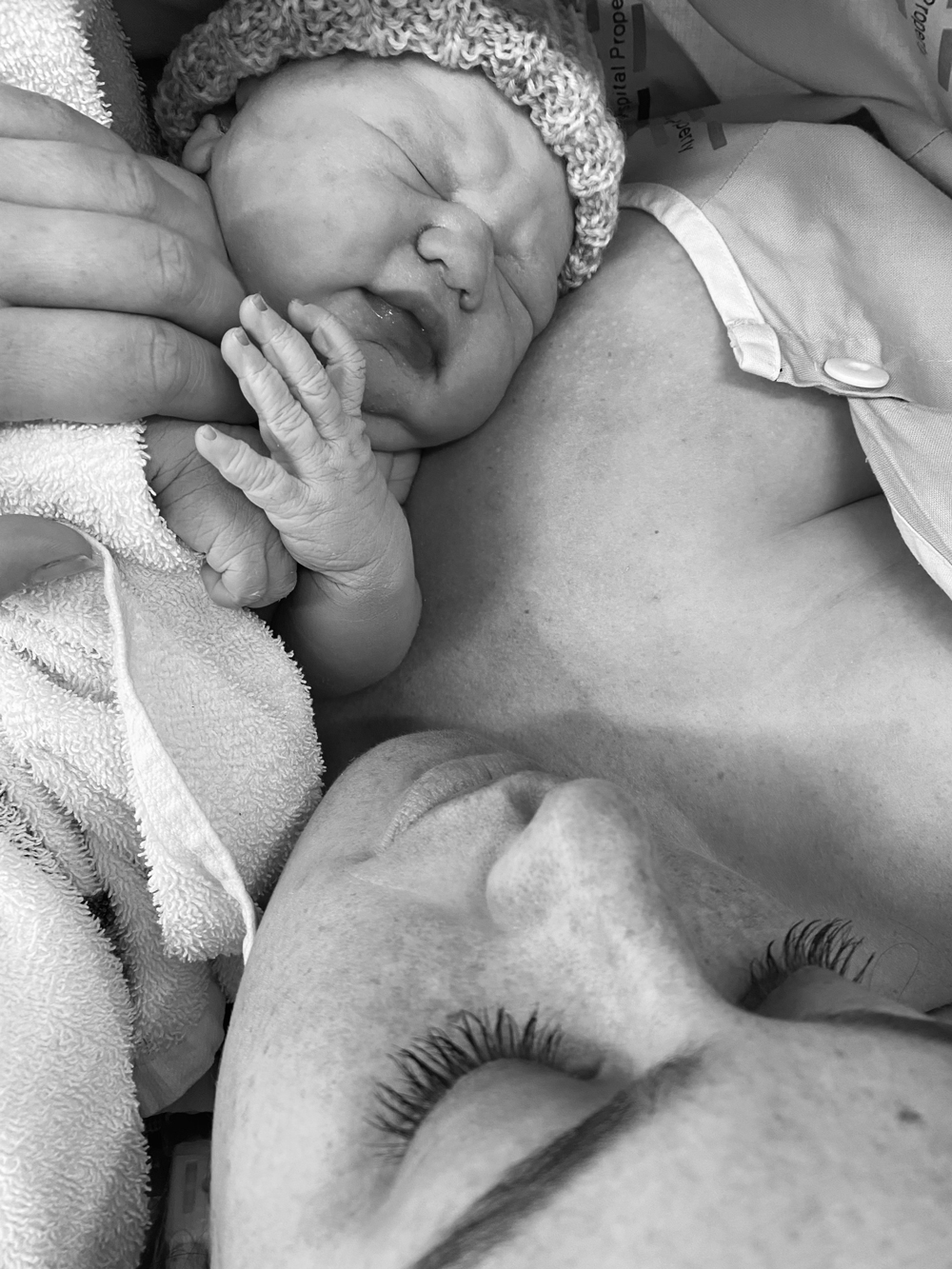

What has motherhood taught you about yourself?
That I can do hard things. That becoming a mother has forced me to look at my inner child and heal some of the trauma I experienced so that I can be better for my children. That I will forever be learning and relearning and unlearning things to help improve myself for the health and wealth of our whānau. That I want to be the kōhanga for our tamariki and so that means going back to wānanga to bring that kaupapa into our whanau if we decide to continue to live overseas.
Tell us about a māmā who is your muse.
I have a few, many of whom are c-section māmā, like a mum I met here in Japan – her name is Teuila Palu and she has had five c-sections for five boys. She has had to travel back to Australia to carry out these surgeries and raises all five of her children here with her husband. Also, Amanda McConchie who is from Aotearoa who I met through social media but lives here in Tokyo as well. Her story and strength are truly incredible and I am honoured to know and be friends with her. Amanda also birthed her son, Arthur via c-section at the same clinic as I did. Fiona Goddard became a friend of mine after I had her do my hair and makeup for many occasions, including my wedding. She birthed both her beautiful children via c-section and I am inspired by her creativity and eye for everything fashion, housing and styling.
And, finally, my dear friend Ngawai Hawera who, again I met through social media by living in Japan. She is my māmā muse who truly inspires me and someone I look up to. Ngawai is an incredible athlete who for the past few months has been living apart from her husband – who is in France – to pursue some goals of her own. She chose ‘her hard’ and came back from France to train and be included in the Waikato Bay of Plenty Netball team that plays in the Synergy Hair National Netball League, the national competition that plays just below the ANZ Netball Championship. She also inspires me because she is a wahine Māori and is raising her daughter (who was born five days after Pīata) in te ao Māori where te reo Māori is her first language. I am so encouraged by her strength and beautiful ahua that she brings every time we see each other. She inspired me to choose ‘my hard’ by committing to enrolling in a total immersion wānanga.
Most of all, my māmā muses are those who are living overseas, supporting their partners and raising children without the support of family. Now I have experienced it for myself, I know the strength of these people that do it without a village. Grace, love and power to you.
Mauri ora.
